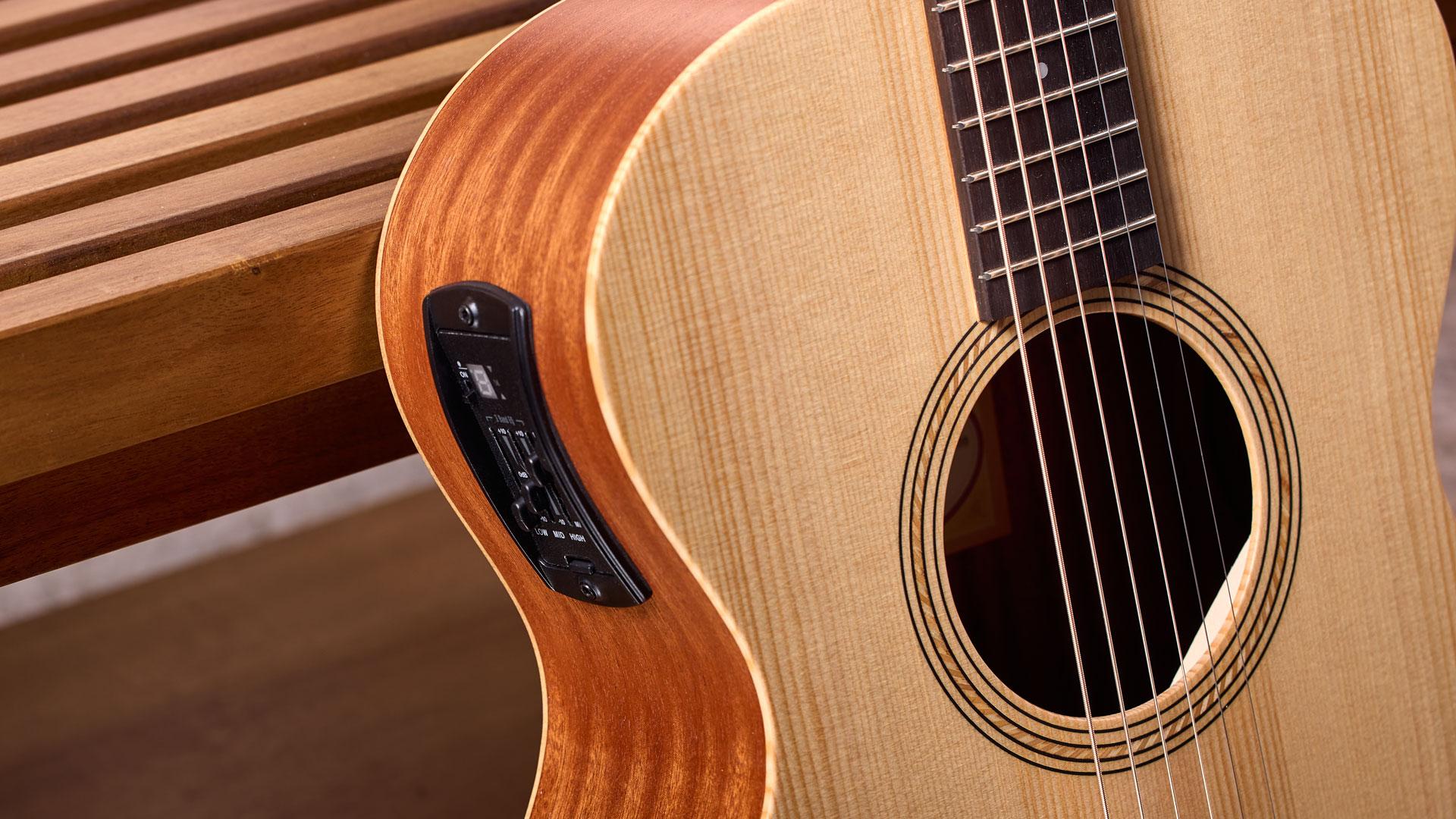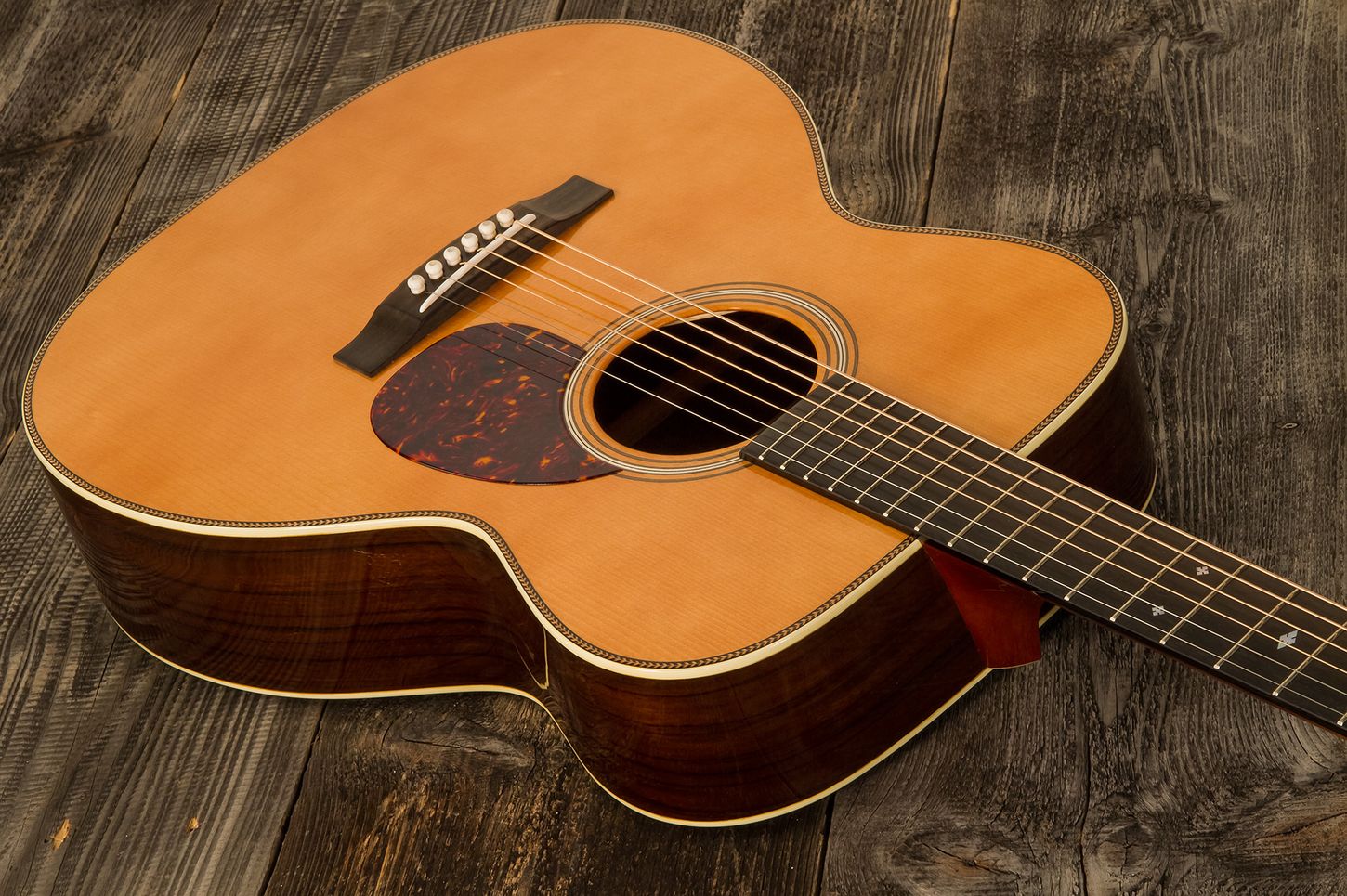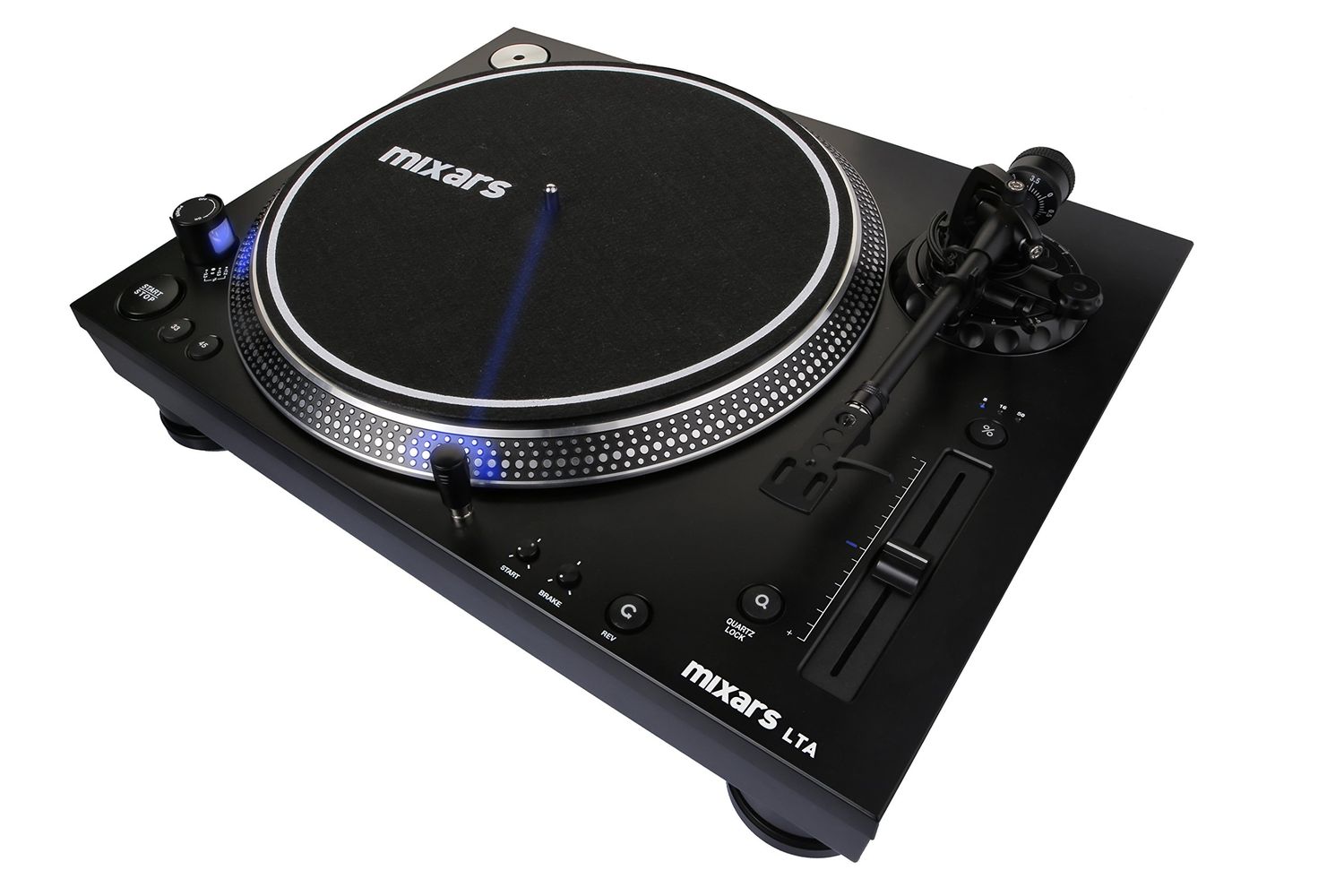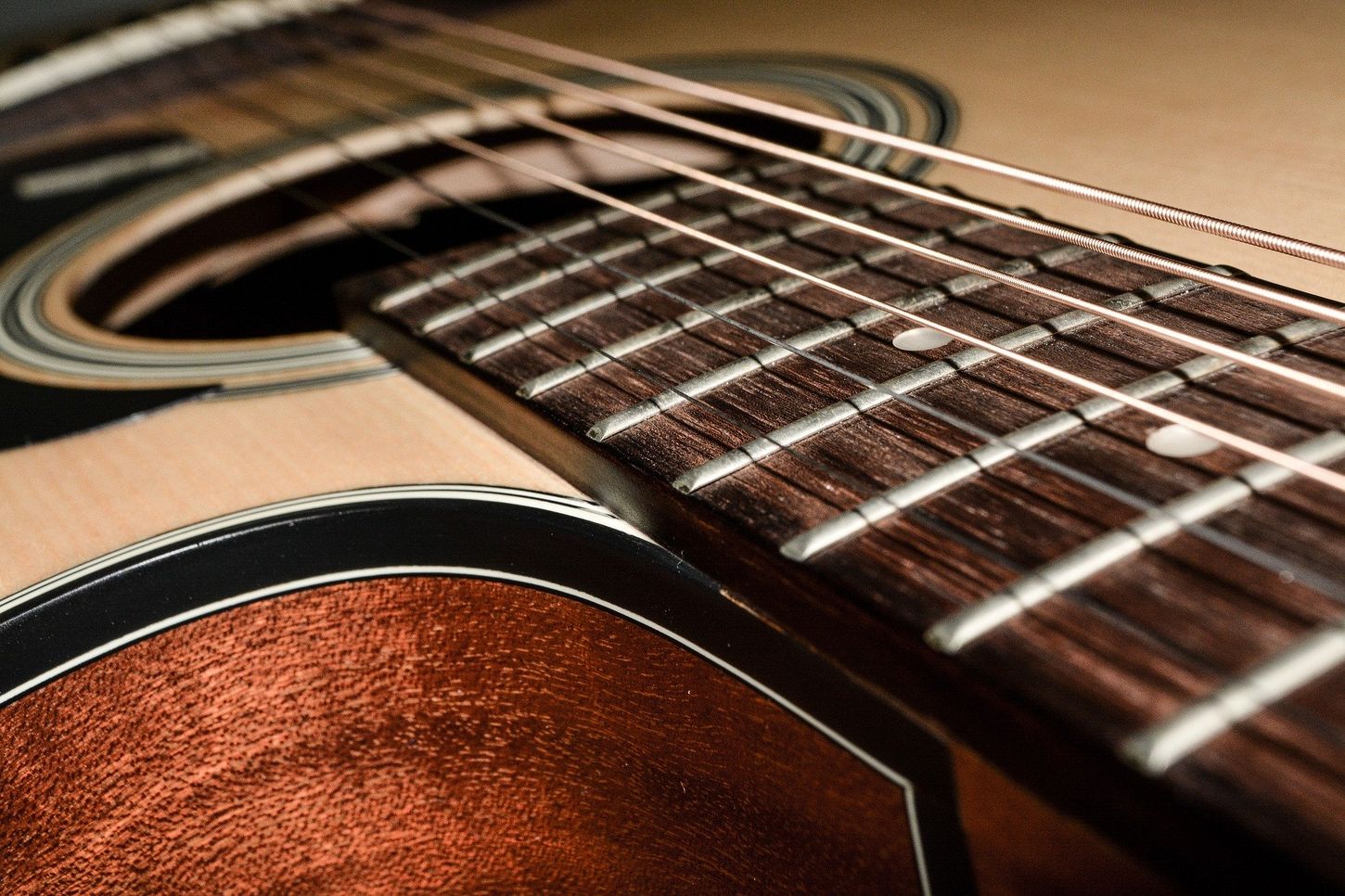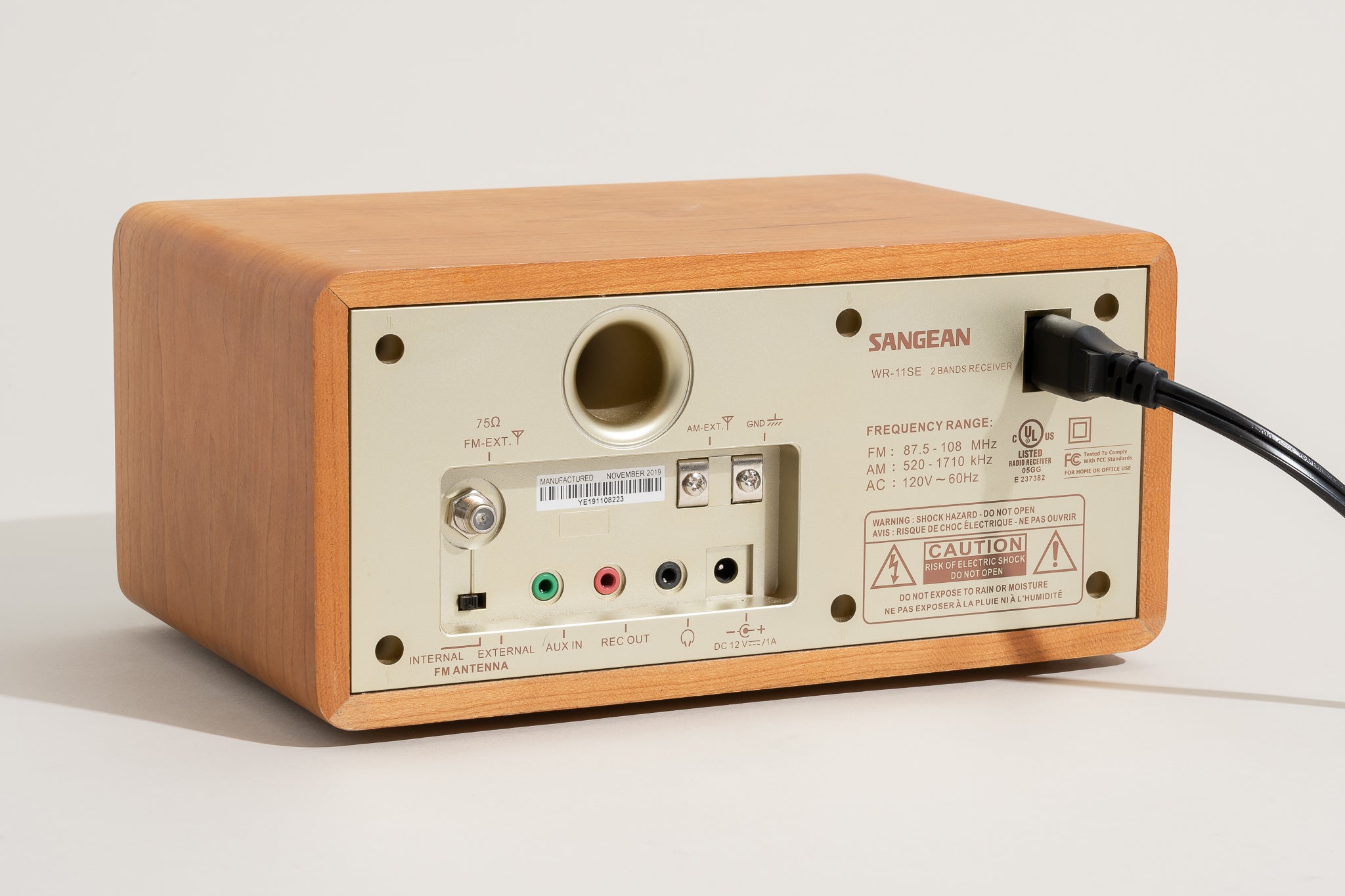Home>Production & Technology>Acoustic>Why Is Acoustic Guitar So Hard To Play


Acoustic
Why Is Acoustic Guitar So Hard To Play
Published: March 12, 2024
Discover why playing the acoustic guitar can be challenging and learn tips to improve your skills. Explore the reasons behind the difficulty of mastering the acoustic guitar.
(Many of the links in this article redirect to a specific reviewed product. Your purchase of these products through affiliate links helps to generate commission for AudioLover.com, at no extra cost. Learn more)
Table of Contents
Introduction
Playing the acoustic guitar is a dream for many music enthusiasts. The allure of strumming beautiful melodies and creating soul-stirring rhythms is undeniable. However, for those who have embarked on the journey of mastering this instrument, the initial excitement may be accompanied by a sobering realization – the acoustic guitar is hard to play. This sentiment is shared by countless beginners who have grappled with the challenges posed by this iconic instrument.
The difficulty of playing the acoustic guitar stems from a combination of factors, including the physics of the instrument, the demand for finger strength and dexterity, the influence of string tension and action, the importance of proper technique and posture, and the process of developing calluses. Understanding these elements is crucial for aspiring guitarists to navigate the initial hurdles and progress on their musical odyssey.
As we delve into the intricacies of playing the acoustic guitar, it becomes evident that the journey is not merely about mastering an instrument; it is a transformative experience that demands dedication, perseverance, and a deep appreciation for the art of music. Through this exploration, we aim to shed light on the challenges that make the acoustic guitar a formidable yet rewarding pursuit, and provide insights to empower aspiring musicians on their quest for mastery.
The Physics of Acoustic Guitar
The acoustic guitar, with its elegant curves and resonant body, is a marvel of engineering and craftsmanship. At the heart of its enchanting sound lies the intricate interplay of physics, which significantly influences the instrument's playability. Understanding the physics of the acoustic guitar unveils the complexities that contribute to its challenging nature.
One of the fundamental aspects of the acoustic guitar is its sound production mechanism. When a guitarist plucks a string, it sets off a chain reaction of physical phenomena. The string vibrates, creating sound waves that propagate through the air and resonate within the hollow body of the guitar. This process is governed by principles of acoustics, including the interaction of vibrating strings with the surrounding air and the amplification of sound within the guitar's sound chamber.
Moreover, the design and construction of the acoustic guitar play a pivotal role in shaping its sonic characteristics and playability. The size and shape of the guitar body, the type of tonewoods used, and the bracing pattern all influence the instrument's resonance, sustain, and tonal qualities. These factors contribute to the unique feel and responsiveness of the guitar, making it inherently different from its electric counterpart.
Furthermore, the physics of string tension and intonation are crucial considerations for guitarists. The tension exerted on the strings affects the effort required to fret notes and execute chord shapes. Additionally, the precise adjustment of the guitar's intonation, which ensures accurate pitch across the fretboard, is a result of the intricate balance between string length, tension, and the placement of frets.
In essence, the physics of the acoustic guitar underscores the intricate relationship between the instrument, the musician, and the sonic environment. It illuminates the profound connection between the physical properties of the guitar and the expressive potential it offers to players. By delving into the physics of the acoustic guitar, aspiring musicians gain a deeper appreciation for the instrument's complexity and the artistry involved in mastering its nuances.
Finger Strength and Dexterity
Mastering the acoustic guitar demands more than a passing familiarity with chords and strumming patterns. It requires a formidable alliance between finger strength and dexterity, a union that often proves to be a formidable challenge for beginners. The intricate dance of the fingers across the fretboard, the deft maneuvering between chord shapes, and the precise plucking of strings demand a level of physical coordination and agility that can only be attained through dedicated practice.
At the core of this challenge lies the development of finger strength. The act of pressing down on the guitar strings to produce clear and resonant notes necessitates a significant amount of finger pressure. Novice guitarists often find themselves grappling with the discomfort and fatigue that accompany the initial stages of building finger strength. The fingertips, unaccustomed to the rigors of fretting, may protest with a dull ache, serving as a testament to the demanding nature of the instrument.
In addition to strength, the quest for dexterity becomes a pivotal pursuit for aspiring guitarists. The ability to swiftly transition between chords, execute intricate fingerpicking patterns, and navigate the fretboard with precision hinges on the development of nimble and agile fingers. This demands a meticulous honing of muscle memory, as the fingers learn to instinctively find their positions and execute complex movements with fluidity and grace.
Moreover, the pursuit of finger strength and dexterity is an ongoing journey, as even seasoned guitarists continually strive to enhance their physical capabilities. Through targeted exercises, such as finger-strengthening drills, chord transition practices, and scale workouts, musicians endeavor to push the boundaries of their finger agility and fortitude. This relentless pursuit of physical mastery is a testament to the unwavering dedication that defines the path of a guitarist.
Ultimately, the quest for finger strength and dexterity transcends the realm of physicality; it embodies the spirit of resilience and determination that propels musicians forward on their musical odyssey. As aspiring guitarists embark on this transformative journey, they embrace the challenges posed by the instrument, recognizing that the pursuit of mastery is not merely about technical proficiency, but a profound testament to the indomitable human spirit.
String Tension and Action
String tension and action are pivotal elements that significantly influence the playability and responsiveness of an acoustic guitar. Understanding the interplay between these factors is crucial for aspiring guitarists seeking to navigate the nuances of the instrument.
The tension exerted on the strings of an acoustic guitar plays a defining role in shaping the overall playing experience. String tension refers to the degree of tautness or tightness of the strings when tuned to standard pitch. Higher string tension results in a firmer feel under the fingers, requiring increased finger strength to fret notes and execute chord shapes. Conversely, lower string tension offers a more relaxed feel, necessitating less effort to depress the strings. This distinction in tension levels directly impacts the tactile feedback and physical demands placed on the guitarist, influencing the overall comfort and playability of the instrument.
Moreover, the concept of string action, often referred to as the string height, further contributes to the dynamic interplay between the guitarist and the instrument. String action denotes the distance between the strings and the fretboard. A higher string action requires the guitarist to exert more force when pressing down on the strings, potentially leading to finger fatigue and discomfort, especially for prolonged playing sessions. On the other hand, a lower string action reduces the effort needed to fret notes, facilitating smoother transitions between chords and enhancing overall playability.
The delicate balance between string tension and action is a critical consideration for guitarists aiming to optimize their playing experience. Finding the ideal equilibrium involves meticulous adjustments to the guitar's setup, including the truss rod, bridge, and nut, to achieve a personalized configuration that aligns with the player's preferences and playing style. Additionally, the choice of guitar strings, which come in varying gauges and materials, directly impacts the string tension, thereby influencing the instrument's feel and tonal characteristics.
Ultimately, the relationship between string tension and action underscores the intricate synergy between the physicality of the instrument and the tactile experience it offers to the guitarist. Aspiring musicians embarking on their journey of mastering the acoustic guitar are encouraged to explore and understand the nuances of string tension and action, recognizing their profound impact on the instrument's playability and the guitarist's expressive potential.
Proper Technique and Posture
Mastering the acoustic guitar extends beyond the realm of musical prowess; it encompasses a profound understanding of proper technique and posture. The significance of cultivating sound technique and maintaining optimal posture cannot be overstated, as they form the bedrock upon which musical fluency and physical well-being are built.
Proper technique encompasses a myriad of elements, including hand positioning, finger placement, and strumming or picking methods. The alignment of the fretting hand and the precision of finger placement directly impact the clarity and resonance of the notes produced. Meanwhile, the strumming or picking hand's coordination and control dictate the rhythmic pulse and dynamics of the music. Embracing correct technique from the outset lays a solid foundation for technical proficiency and expressive versatility.
Equally vital is the aspect of posture, which encompasses the ergonomic alignment of the body while playing the guitar. Maintaining a balanced and relaxed posture not only enhances playing comfort but also mitigates the risk of musculoskeletal strain and injury. Proper posture involves sitting or standing with a straight back, ensuring that the shoulders are relaxed and the arms are positioned naturally. Additionally, the guitar should be positioned at an optimal height and angle to facilitate effortless fretting and strumming, promoting a seamless and enjoyable playing experience.
Furthermore, the integration of proper technique and posture fosters a symbiotic relationship between the musician and the instrument. It empowers guitarists to channel their musical intentions with precision and finesse, transcending technical barriers to express their artistic vision authentically. Moreover, by prioritizing ergonomic posture and technique, musicians safeguard their physical well-being, nurturing a sustainable and enduring musical journey.
In essence, the pursuit of proper technique and posture is a testament to the holistic approach that underpins the mastery of the acoustic guitar. Aspiring guitarists are encouraged to embrace these foundational principles, recognizing their transformative potential in shaping not only musical proficiency but also physical health and longevity in their musical endeavors.
Developing Calluses
The journey of mastering the acoustic guitar is punctuated by a unique rite of passage – the development of calluses on the fingertips. This natural phenomenon, often regarded as a badge of honor among guitarists, holds profound significance in the realm of playing the instrument. Aspiring guitarists embark on a transformative process as they cultivate these resilient epidermal shields, which not only serve as a testament to their dedication but also play a pivotal role in enhancing their playing experience.
The formation of calluses is a direct response to the physical demands placed on the fingertips during guitar practice. As novice guitarists begin their musical odyssey, they are confronted with the discomfort and tenderness that accompany prolonged fretting and string manipulation. However, as they persist in their practice regimen, the skin on their fingertips undergoes a remarkable adaptation process. The repeated friction and pressure exerted by the guitar strings stimulate the thickening of the skin, gradually giving rise to calluses – toughened patches that shield the underlying tissue from excessive strain.
These calluses, though unassuming in appearance, bestow a myriad of benefits upon guitarists. They serve as a natural cushion, reducing the discomfort associated with fretting and enabling sustained playing sessions. Moreover, calluses enhance tactile sensitivity, allowing guitarists to exert precise control over their finger movements and produce clear, resonant notes. The presence of calluses also facilitates a more confident and assertive approach to playing, empowering musicians to explore the instrument with increased vigor and endurance.
Beyond their practical advantages, calluses symbolize the guitarist's unwavering commitment and perseverance. They embody the resilience and fortitude required to surmount the initial challenges of learning the instrument, serving as tangible evidence of the guitarist's dedication to their craft. Furthermore, the development of calluses fosters a profound connection between the musician and their instrument, signifying a harmonious fusion of physicality and musical expression.
In essence, the process of developing calluses transcends the realm of physical adaptation; it encapsulates the spirit of resilience and determination that defines the journey of mastering the acoustic guitar. Aspiring guitarists are encouraged to embrace this natural evolution, recognizing the transformative power of calluses in fortifying their musical prowess and forging an enduring bond with their instrument.
Conclusion
In the realm of music, the acoustic guitar stands as a timeless emblem of artistic expression and emotional resonance. Aspiring musicians who embark on the journey of mastering this iconic instrument are met with a myriad of challenges, each serving as a testament to the profound nature of the pursuit. The complexities inherent in playing the acoustic guitar, from the intricate physics that govern its sonic characteristics to the demanding requirements of finger strength and dexterity, string tension and action, proper technique and posture, and the development of calluses, underscore the transformative odyssey that awaits those who seek to unlock its melodic potential.
The pursuit of mastering the acoustic guitar transcends the mere acquisition of technical proficiency; it embodies a profound testament to the indomitable human spirit. As novice guitarists navigate the initial hurdles and persist in their practice, they embark on a transformative journey of self-discovery and artistic growth. The challenges posed by the acoustic guitar serve as catalysts for personal resilience, determination, and unwavering dedication, shaping aspiring musicians into adept custodians of melody and rhythm.
Moreover, the pursuit of mastering the acoustic guitar is a testament to the holistic fusion of physicality, artistry, and emotional depth. It demands a harmonious balance between technical precision and heartfelt expression, inviting musicians to delve into the depths of their creativity and weave intricate tapestries of sound. The challenges encountered along this musical odyssey serve as crucibles, forging a profound connection between the musician and their instrument, and nurturing an enduring passion for the art of music.
As aspiring guitarists navigate the complexities of playing the acoustic guitar, they are invited to embrace the challenges as opportunities for growth and self-discovery. Each obstacle surmounted, each callus formed, and each note perfected becomes a testament to their unwavering commitment to the art of music. The pursuit of mastering the acoustic guitar is not merely a journey; it is a transformative passage that imbues musicians with resilience, fortitude, and an unyielding passion for the timeless allure of melody and rhythm.

